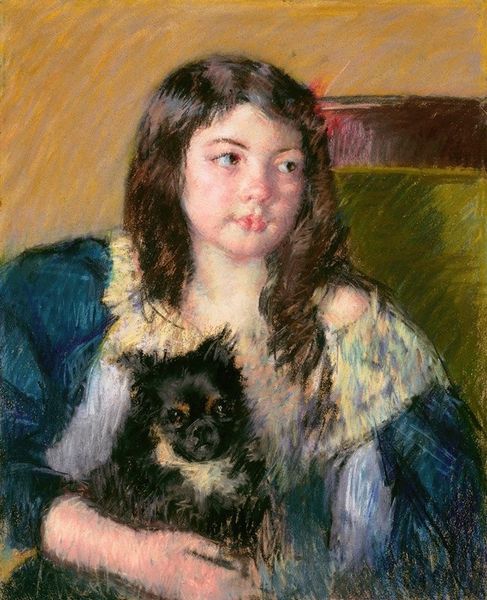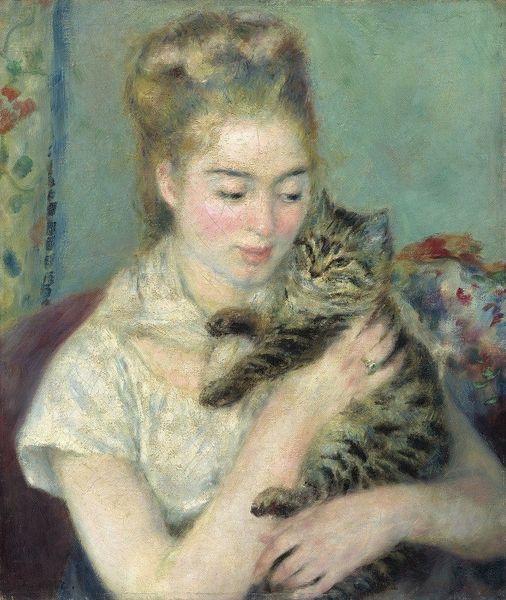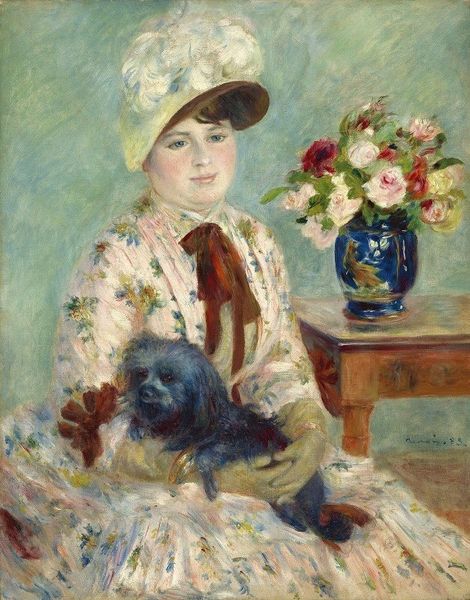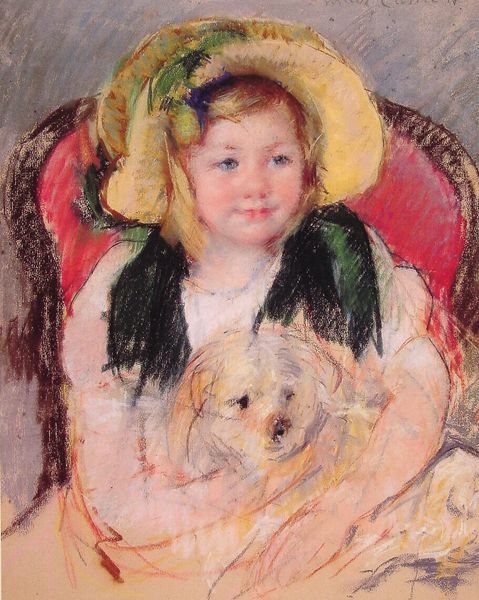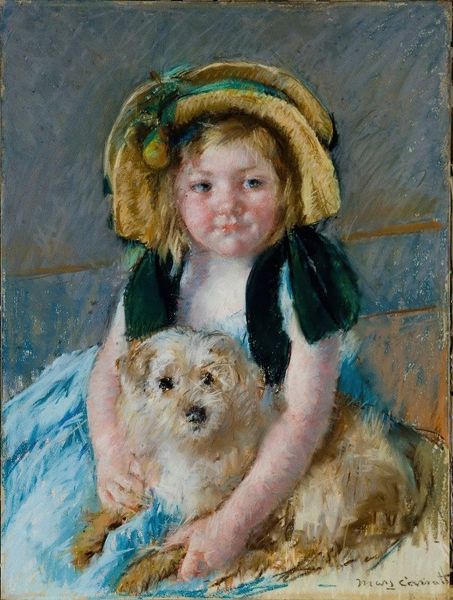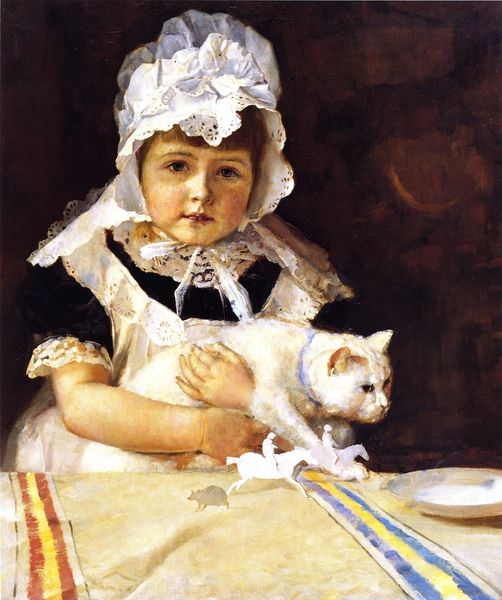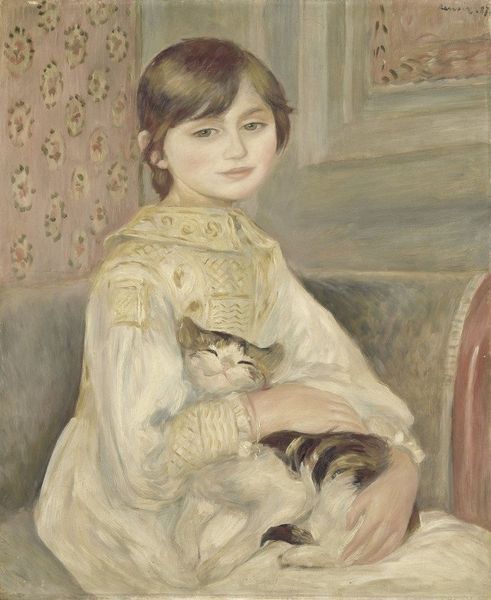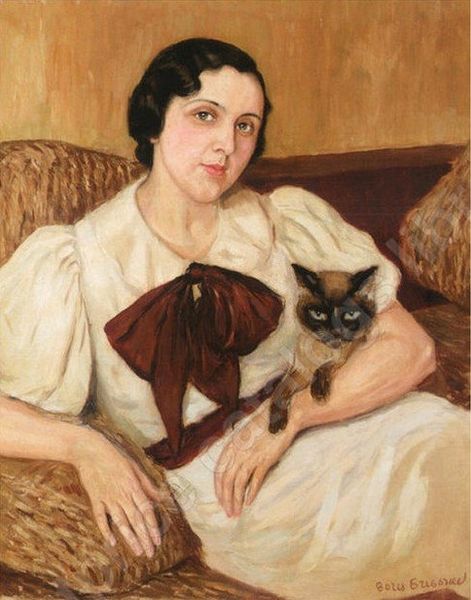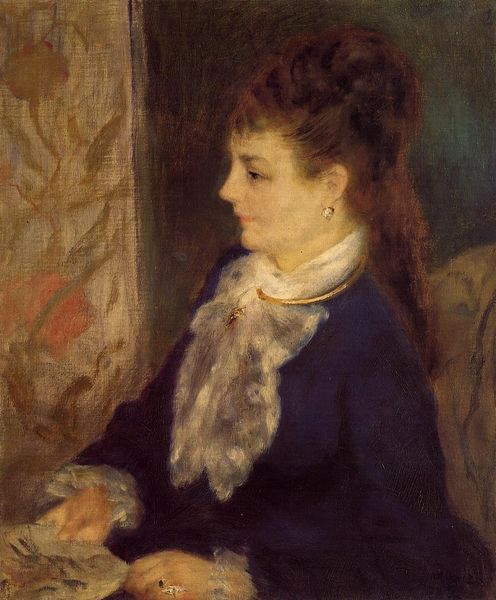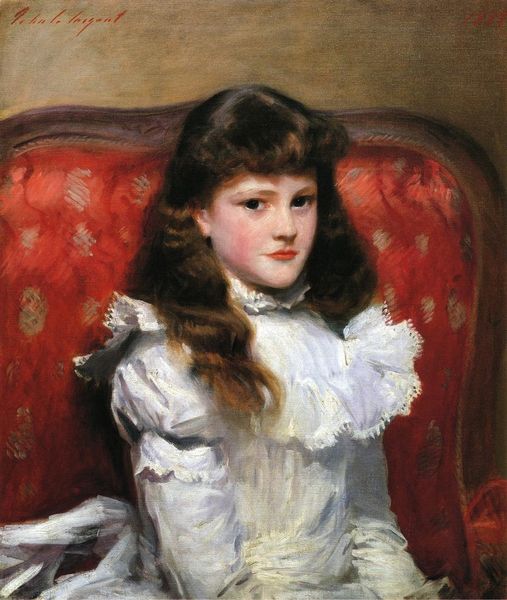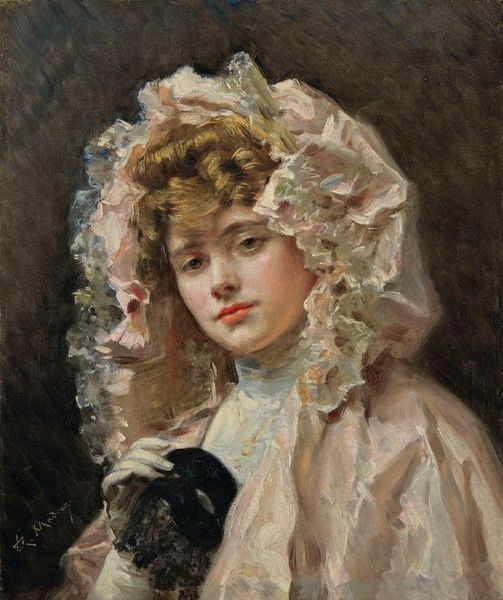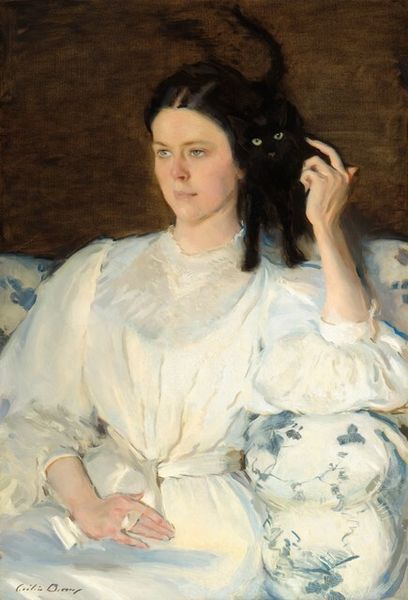
Copyright: Public domain
Editor: Here we have Mary Cassatt's "Portrait of Mie Louise Durand-Ruel" from 1911, made with pastel. There's something incredibly gentle and intimate about it, especially the way she holds that little dog. What strikes you about this work? Curator: For me, the focus is on the materiality. Cassatt's choice of pastel is crucial. It speaks to accessibility; pastels were less expensive, widening art production beyond oil paints and traditional "high art". This potentially democratizes art making and consumption, reflecting societal shifts regarding class and leisure. Editor: That's a good point about access. The pastel gives it a softer edge, maybe more approachable than a formal oil portrait. Do you think Cassatt deliberately chose pastel for that reason? Curator: Absolutely, the rapid application allowed Cassatt to quickly capture fleeting moments. Consider, too, the labour. The making of pastels itself involved specific craftsmanship. The pigments, the binding agents—these weren't just "materials," they were products of specific labour, a physical connection to the means of production absent from some other fine art forms. It prompts us to reconsider traditional notions of “high” and “low” art. Editor: So, by using pastel, Cassatt might be commenting on the art market itself, and challenging existing artistic hierarchies? Curator: Exactly. Moreover, examine the subject: a young woman, perhaps from a rising middle-class family indicated by her simple attire. Cassatt might also be commenting on changing social roles through depicting domestic intimacy as an important artistic subject. Editor: I never thought about it that way. The artwork isn’t just an image; it also reveals a lot about social and economic conditions when it was made. Thanks! Curator: Precisely. Considering art in relation to production methods brings new insights and meaning to our understanding.
Comments
No comments
Be the first to comment and join the conversation on the ultimate creative platform.
